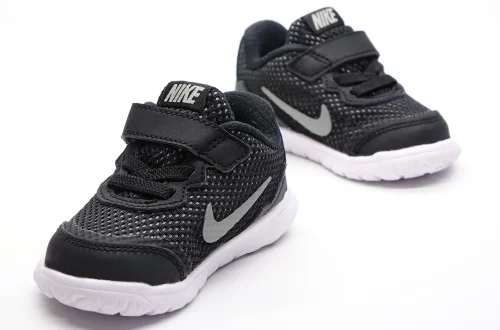
Understanding Your Cat’s Grooming Behavior and Its Significance
Grooming is an intrinsic part of a cat’s life, deeply ingrained in their behavior and essential for their overall well-being. It serves multiple purposes, ranging from physical health to psychological comfort. When observing a cat meticulously licking its fur, one might wonder about the significance and implications of this seemingly simple act. Grooming is not merely a ritualistic behavior; it plays a pivotal role in maintaining hygiene, regulating body temperature, and even fostering social bonds among felines.
Cats expend a significant amount of their waking hours grooming themselves, and this behavior can be influenced by various factors, including their environment, health status, and emotional state. Understanding the nuances of grooming behavior can help pet owners provide better care for their furry companions and recognize changes that might indicate underlying health issues. This article delves into the different aspects and meanings behind your cat’s grooming habits, shedding light on why this behavior is so vital to their overall health and happiness.
The Importance of Grooming for Cats
Grooming serves as a vital function in a cat’s life, contributing to both physical and emotional well-being. One of the primary benefits of grooming is the maintenance of cleanliness. Cats use their tongues, which are covered with tiny, hook-like structures called papillae, to remove dirt, debris, and loose fur from their coats. This self-cleaning behavior helps prevent matting and tangles, ensuring that their fur remains healthy and manageable.
In addition to hygiene, grooming plays a crucial role in regulating a cat’s body temperature. By licking their fur, cats can distribute natural oils produced by their skin, which can help insulate them against temperature fluctuations. This is particularly important for outdoor cats that may face varying environmental conditions. Moreover, grooming can help to cool them down; when saliva evaporates from their fur, it provides a cooling effect.
Another significant aspect of grooming is its role in stress relief and emotional comfort. Cats often groom themselves when they are feeling anxious or stressed, as this behavior has a soothing effect similar to how humans might engage in habits like nail-biting or hair-twirling. For many cats, grooming is a self-soothing mechanism that helps them cope with various stressors in their environment, such as loud noises or unfamiliar situations.
Grooming also serves a social function among cats. In multi-cat households, you may observe cats grooming each other—a behavior known as allogrooming. This act strengthens social bonds and fosters a sense of community among feline companions. By understanding these various functions of grooming, cat owners can appreciate the complexity of this behavior and its significance in their pet’s life.
Grooming Behavior and Health Indicators
Observing your cat’s grooming habits can provide valuable insight into their health. Changes in grooming behavior may indicate underlying health issues that require attention. For instance, if a cat suddenly stops grooming itself, it may be a sign of illness, pain, or discomfort. Conditions such as dental disease, arthritis, or skin infections can lead to decreased grooming. Conversely, excessive grooming can also be a cause for concern. When a cat over-grooms, it may be attempting to alleviate stress or discomfort, which could stem from factors such as allergies, anxiety, or even a compulsive disorder.
Skin conditions, such as dermatitis or parasites like fleas, often lead to increased grooming as the cat tries to relieve itching or irritation. If you notice your cat excessively grooming a specific area, it might be beneficial to consult with a veterinarian to rule out any medical issues.
Another health-related aspect of grooming is the potential ingestion of hair. While grooming is essential for maintaining a clean coat, excessive hair ingestion can lead to the formation of hairballs, which can cause gastrointestinal blockages if not managed properly. Regular brushing can help minimize hairballs and reduce the amount of fur your cat ingests.
In summary, grooming behavior can serve as an essential indicator of a cat’s health. By paying close attention to changes in grooming habits, owners can catch potential health issues early and seek appropriate veterinary care.
The Role of Environment in Grooming Habits
A cat’s environment plays a crucial role in shaping its grooming behaviors. Factors such as living conditions, the presence of other pets, and household routines can significantly influence how and when a cat grooms itself. For instance, cats in a stressful or chaotic environment may exhibit altered grooming habits. An unstable atmosphere, characterized by loud noises or frequent disruptions, can lead to increased anxiety, causing cats to over-groom as a coping mechanism.
The availability of grooming tools and surfaces also impacts grooming behavior. Cats naturally seek out various textures to scratch or rub against, which can aid in maintaining their coat. Providing your cat with appropriate grooming tools, such as brushes or combs, can encourage healthy grooming practices and reduce the likelihood of matting or excessive hairballs.
Additionally, the presence of other pets can influence grooming habits. Cats that share their space with other animals may engage in allogrooming, which can strengthen social bonds. However, if there is tension or rivalry between pets, this can lead to stress-related grooming issues. It’s essential to observe how your cat interacts with other pets and adjust the environment to promote harmony.
Moreover, enriching an indoor environment can help reduce stress and encourage natural behaviors. Providing various climbing structures, scratching posts, and interactive toys can create a stimulating atmosphere that allows cats to feel secure. A well-balanced environment can lead to healthier grooming habits and overall well-being.
In conclusion, understanding the role of environment in grooming behaviors can help cat owners create a supportive atmosphere that promotes healthy habits. By recognizing factors that influence grooming, owners can take proactive steps to enhance their cat’s quality of life.
Grooming and Cat’s Social Behavior
Grooming is not only a solitary activity for cats; it also plays a significant role in their social interactions. In multi-cat households, you may often witness cats engaging in allogrooming, where they groom each other. This behavior is essential for establishing and maintaining social bonds among cats. Allogrooming promotes trust, reduces tension, and fosters companionship. Cats that groom each other are often more harmonious and exhibit less aggressive behavior.
The act of grooming can also serve as a form of communication among cats. When one cat initiates grooming, it may signal a desire for social interaction or affection. Conversely, if a cat is reluctant to engage in grooming with another, it could indicate a lack of trust or discomfort in that relationship.
In addition to interactions with other cats, grooming can also be a way for cats to bond with their human companions. Many cats enjoy being brushed or petted, and these moments can strengthen the human-animal bond. Regular grooming sessions can become a shared activity that enhances the relationship between cats and their owners, promoting feelings of safety and affection.
Furthermore, the social aspect of grooming extends to how cats perceive their environment. A cat that feels secure and comfortable in its environment is more likely to engage in social grooming behaviors. On the other hand, a stressed or anxious cat may isolate itself and refrain from grooming, indicating potential issues in its social dynamics.
In summary, grooming serves as a crucial component of social behavior among cats. Understanding the importance of social grooming can help cat owners create a cohesive living environment that promotes positive interactions and strengthens the bonds between their pets.
In conclusion, grooming is an essential behavior that encompasses a range of functions, from hygiene and health to social interactions. By understanding the intricacies of your cat’s grooming habits, you can foster a healthier and more fulfilling life for your feline friend.
*Note: This article is intended for informational purposes only and should not be considered medical advice. For any health-related concerns regarding your cat, please consult a qualified veterinarian.*




